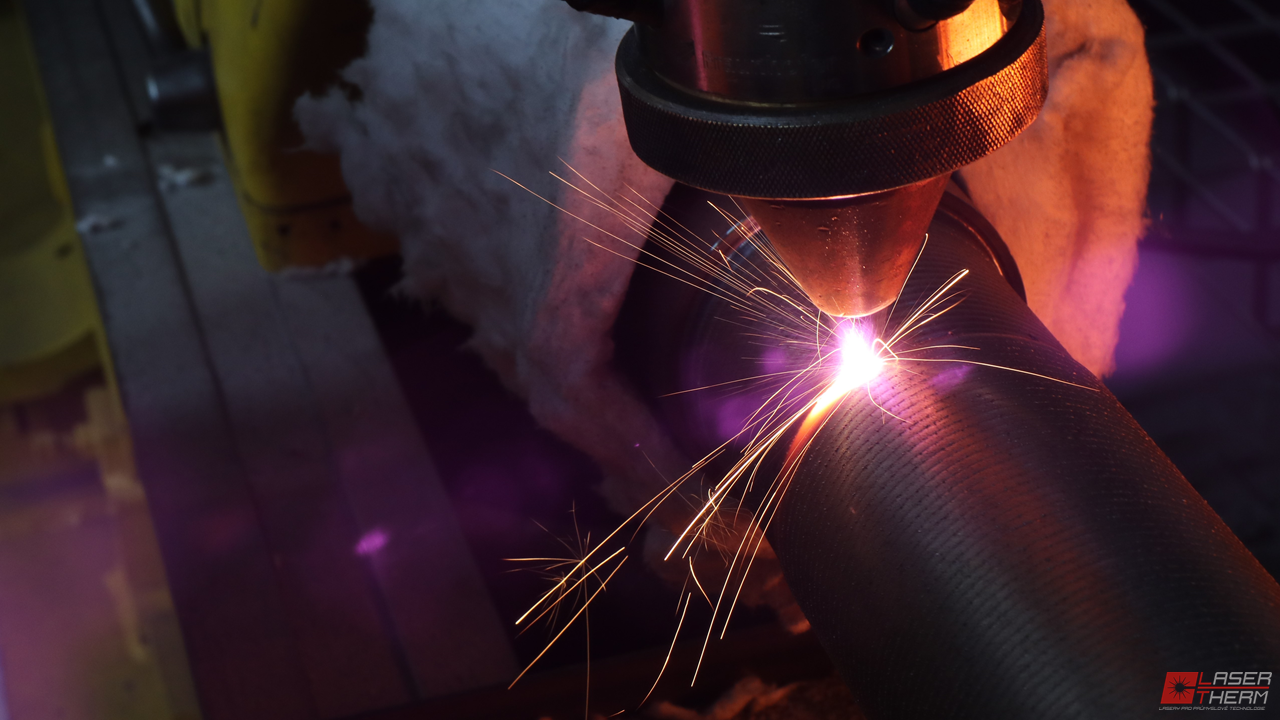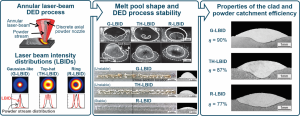Researchers from the Laboratory of Synergetics (LASIN) have carried out a study on the influence of laser beam intensity distribution on the performance of directed laser deposition of metal powders. It has been shown that in the case of axial powder feed, the ring distribution of the laser beam is most effective in ensuring the stability of the process and the geometrical (uniformity and clad symmetry on the surface and in depth) and metallurgical properties (minimal porosity and improved metallurgical bond) of the clad. The results of the study were published in the renowned Journal of Materials Processing Technology (IF: 6.3).
Due to its unique properties and performance, metal powder is used in many industries and processes as well as in the field of additive technologies. Directed laser deposition (DLD) of metal powder is one of the additive manufacturing processes that, in addition to 3D printing of components, also enables the improvement of the surface properties and repair of dies and molds by cladding. It is also increasingly used for the development of new alloys and functional gradient materials, which are characterised by controlled changes in locally dependent material properties. In addition to the stability of the DLD process and the powder catchment efficiency, the geometric properties and metallurgical characteristics of the clads, such as microstructure and porosity, are also important indicators of the performance of the DLD process in the above-mentioned applications.
In the research, three different laser beam intensity distributions (LBID) were considered: Gaussian (G-LBID), top-hat (TH-LBID) and ring (R-LBID) distribution. It was shown that the relationships between LBID and Gaussian distribution of the particles in the powder stream have a characteristic influence on the performance of the process, which is particularly pronounced at lower laser beam intensities. It was found that, except from the point of view of powder catchment efficiency h, which is higher with Gaussian and uniform LBID, the ring LBID ensures a higher stability of the process and better geometrical and metallurgical properties of the clads.
The proven advantages of the ring LBID, in addition to motivating further research in the field of dynamic shaping of LBID and development of functional gradient materials, represent a great potential for improvements in other additive manufacturing processes that use a laser beam as an energy source.
Article is available on: https://doi.org/10.1016/j.jmatprotec.2024.118360

